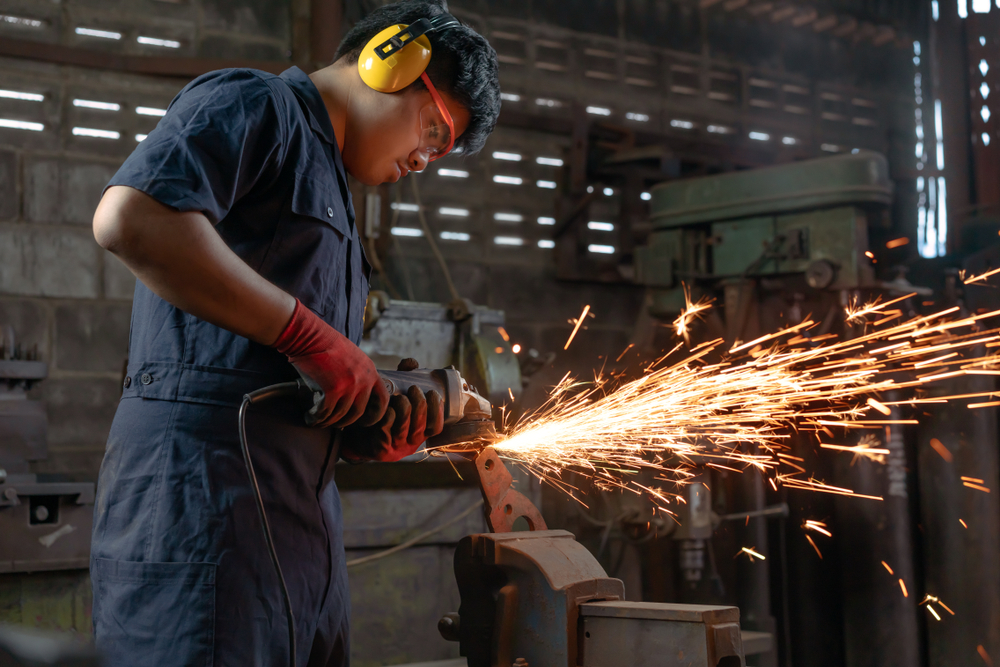5 Tips for Optimising your Custom Metal Fabrication Design
Custom metal work is an excellent method to bring all manner of projects to life. Before this can begin, however, you will need a well-defined metal design to ensure precision with custom-cut metals.
In this article, KNS Metals offers five key tips to optimise your custom metal fabrication design process.
What is Custom Metal Fabrication?
Custom metal fabrication involves designing, engineering and fabricating a range of metal parts, products and components to meet specific requirements or specifications. The process is typically required when certain features are not available in the market,
The fabrication process involves various techniques such as cutting, welding, bending, forming, and assembling metal components into a finished product. As a result, custom metal fabrication can create a wide range of metal products, including machinery parts, structural components, ornamental metalwork, and many others.
The custom metal work process involves a series of steps, including the design and engineering of the product, selection of the metal materials, cutting and shaping of the metal, welding or joining the components together, and finishing the product.
How to Ensure the Best Custom Metal Fabrication Design for Your Next Project
Creating a custom metal fabrication design can be a challenging and complex task, and there are many factors to consider. To optimise your design, you’ll want to:
- Confirm the specifics of your custom sheet metal design
- Refine your metal design
- Work alongside your custom steel fabrication team
- Review the options you have available for your metal
- Outline your finishing choices
1. Confirm the Specifics of Your Custom Sheet Metal Design
To ensure your fabricator understands your expectations and requirements, take the time to review and confirm the specifics within your design. Be precise and provide accurate measurements and dimensions for your design. Specify details like:
- Tolerance levels
- The positions and depth of all holes
- Flatness of your surfaces
- Corner radius
- Thickness of materials
- Total height, width & length
By doing this, you can remove or at least reduce the errors when your custom metal work project moves from design to fabrication.
2. Refine Your Metal Design
The next step is to review and trim back your design where possible. Identifying the essential elements of your design and removing any non-essential or redundant elements that do not add value is crucial to optimising your custom metal fabrication design.
Examine overly detailed or overworked elements and see if they can be simplified. If you need help, talk to your fabricator about streamlining the fabrication process, as they may be able to provide expert advice on how to make minor adjustments to your design.
3. Work Alongside Your Custom Steel Fabrication Team
Collaborating with your fabricator is actually another key part of the design optimisation process. Discuss your design with your fabricator and determine how you can simplify the fabrication process. As mentioned above, they can provide valuable insight into the ideal fabrication process and recommend changes to your design to make it more efficient.
By making just a few adjustments to your design, your expert fabricator can move your custom metal work project through the most efficient processes, reducing costs, increasing efficiency and delivering a project that perfectly meets your specifications.
4. Review the Options You Have Available for Your Metal
Metal alloys are designed to cater to varying requirements and resist diverse forms of corrosion, heat, and force. There are some applications where highly durable metals capable of withstanding extreme temperatures, intense pressure, and corrosive substances are necessary, but they are generally more costly and complex to work with. For other applications, common alloys are sufficient to complete their purpose, especially where they are not exposed to extreme conditions.
Selecting the appropriate metal alloy can significantly simplify the fabrication of custom-cut metals and reduce costs. To achieve this with your custom metal work project, it’s essential to consider:
- Applied Force: Will your finished product need to withstand constant bending, heavy impacts, abrasion, heavy weight, and other similar factors?
- Temperature Exposure: Will ongoing exposure to extreme heat, cold, and significant temperature swings exist?
- Corrosive materials: Is there a likelihood of coming into contact with elements like air and water, as well as some unusual elements like acids?
- Lifetime of Use: The intended lifespan of the product or component will impact the choice of materials as much as the conditions of use.
5. Outline Your Finishing Choices
Choosing the right finishing option can help your project withstand corrosion and extend its lifetime. Finishing options like powder coating, metal plating, anodising, galvanising, and more can help your component or project hold the desired aesthetics, too, sporting the right colours, textures, or shine. Consider your options and select the one that works best for your project.
Contact KNS Metals for Custom Metal Fabrication in Melbourne Today
If you’re looking for custom metal fabrication in Melbourne, KNS Metals is ready to help. Our team of expert fabricators can work with you to optimise your design, create a durable, top-quality, cost-effective product, and provide valuable advice on metal options and finishing options.
Contact us today to get started.


